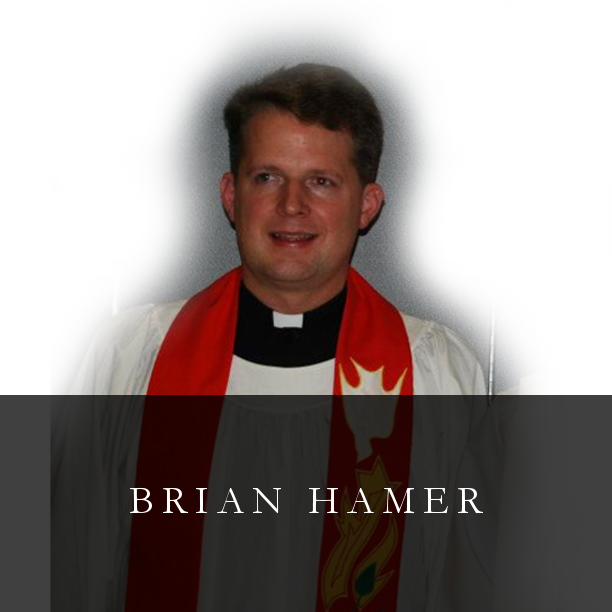Therefore let us keep the feast . . . with the unleavened bread of sincerity and truth.
John Eliot Gardiner, one of the most prominent and accomplished conductors of the works of J. S. Bach, sets the stage, with a little help from his dog:
In his imaginative response to Luther’s text, Bach makes us aware that music can do much more than merely mirror the words from start to finish: he shows that it can hold our attention and captivate us by metaphors that strike like lightning. As long as we are willing to let go and allow him to describe the world to us as he sees it, we are soon provided with a first point of entry. (Bach: Music in the Castle of Heaven, p. 133)
In a rare instrumental introduction to a cantata, the strings “sigh” in veritable anguish, providing a musical transition from the pain of the crucifixion to the unbridled joy of Easter Sunday.
2. Chorus (chorale st. 1) 1:40
The sopranos carry the melody, propelled by lively imitative figures in all other voices. The exuberance reaches new heights at “Alleluia” as the fantasia shifts to cut time and a fleet-footed canon.
Christ Jesus lay in death's strong bands
For our offenses given;
But now at God's right hand He stands
And brings us life from heaven.
Therefore let us joyful be
And sing to God right thankfully
Loud songs of alleluia! Alleluia!
3. Chorus: Soprano, Alto (chorale st. 2) 5:55
This spellbinding duet on the grip of death features descending half-steps in two-note fragments, an exchange between the soprano and the grief-stricken, rocking motion in the basso continuo.
No son of man could conquer death,
Such ruin sin had wrought us.
No innocence was found on earth,
And therefore death had brought us
Into bondage from of old
And ever grew more strong and bold
And held us as its captive. Alleluia!
4. Aria: Tenor (chorale st. 3) 11:15
In stark contrast to the previous movement, unison violins herald the coming of Christ to overthrow sin and death. Is it possible that the angular figures in the violins depict Christ flailing death itself?
Christ Jesus, God's own Son, came down,
His people to deliver;
Destroying sin, He took the crown
From death's pale brow forever:
Stripped of pow'r, no more it reigns;
An empty form alone remains;
Its sting is lost forever. Alleluia!
5. Chorus (chorale st. 4) 13:15
In this central movement of the seven stanzas, Bach depicts the “dreadful strife” between life and death with a fugal stretto, with entries just a beat apart. Can you hear the chorale melody in the alto line?
It was a strange and dreadful strife
When life and death contended;
The victory remained with life,
The reign of death was ended.
Holy Scripture plainly saith
That death is swallowed up by death,
Its sting is lost forever. Alleluia!
6. Aria: Bass (chorale st. 5) 15:27
A descending chromatic line depicts the sacrificial Lamb, the bass soloist plunging to a low E-sharp at 17:49 in this video, followed by a musical “resurrection” to a high D for nearly ten beats.
Here our true Paschal Lamb we see,
Whom God so freely gave us;
He died on the accursed tree--
So strong His love—to save us.
See, His blood now marks our door;
Faith points to it; death passes o'er,
And Satan cannot harm us. Alleluia!
7. Duet: Soprano, Tenor (chorale st. 6) 19:08
The soloists toss the opening chorale motif back and forth, before transitioning into joyous and lilting 6/8 meter, inviting the redeemed to believe in Christ, “the joy of all.”
So let us keep the festival
To which the Lord invites us;
Christ is Himself the joy of all,
The sun that warms and lights us.
Now His grace to us imparts
Eternal sunshine to our hearts;
The night of sin is ended. Alleluia!
8. Chorus (chorale st. 7) 20:50
Bach frequently ends his cantatas with a “four-square” chorale for all instruments and voices, with the possibility that the congregation might have sung the melody with the sopranos.
Then let us feast this Easter Day
On Christ, the bread of heaven;
The Word of grace has purged away
The old and evil leaven.
Christ alone our souls will feed;
He is our meat and drink indeed;
Faith lives upon no other! Alleluia!
(Text: Public Domain, Lutheran Service Book 458)
Once more from Gardiner:
Bach’s achievement in Christ lag is to draw the listener . . . into this drama of faith – by the techniques of the apprentice rhetorician and the compelling skill of his precocious artistry, but most of all by the basic honesty of his approach . . . [Bach] set down a marker [in this early work] for his future accommodation between words and music. . . . (Castle of Heaven, p. 138).
Not to be excluded from this comprehensive Easter narrative, of course, is the admonition to “feast this Easter Day on Christ, the bread of heaven” (st. 7). The Old Testament Passover would have been woefully incomplete without eating the Lamb slain. In New Testament terms, St. Paul says that “Christ, our Passover, is sacrificed for us.” Christ is our Passover Lamb, the great once-for-all sacrifice for sin, who fulfilled all that was foreshadowed in the Old Testament sacrifices. And like the sacrifices of old, what was killed is also eaten. But unlike the sacrificial meals of old, He does not offer you His dead body and blood in the Easter feast, but rather His living, vivifying, and resurrected Body, all to nourish and sustain your dying body to eternal life. And he bids you, Dearly Beloved, to approach the altar in sincerity and truth, for “He is our meat and drink indeed; Faith lives upon no other! Alleluia!”



 RSS Feed
RSS Feed
